Part 20: Mythology Dissection 1

Kamui Characters
This is it, people: the last Mythology Dissection! It will cover mythological things from Act 3. I’ve tried to be as thorough as I can about Okami’s mythology up to now, but if I missed something, now’s your chance to point it out! A big thank-you to everyone who has read my Dissections, and an extra big thank-you to everyone who corrected me when I got stuff wrong: Tau Wedel, themindisonfire, Vil, Tax Refund etc. Extra, extra big thanks to Pesky Splinter for providing us with the fabulous and fantastic Okami artbook. You rock! All of you wonderful people helped make these Dissections possible. Give yourselves a pat on the back!
Oh, and um, this is gonna be a long one, so you might want to grab a snack.

The Oina
The Oina are based on the Ainu, an indigenous tribe of northern Japan and parts of northeast Russia. They settled in Hokkaido, Japan's northernmost prefecture, 20,000 years ago. As Tau Wedel noted, they were also called the Ezo people in Japan, hence the name Ezofuji. Ezo is also one of the historic names for Hokkaido. The Ainu were animists: they believed that everything in nature had an immortal spirit. The spirit of the bear was especially important to them, for providing them with hides and food. Judging from that, it would have made more sense to have the Oina shapeshift into bears, not wolves. Oh well!

An Ainu man, circa 1860. Ainu men never shaved their beards.
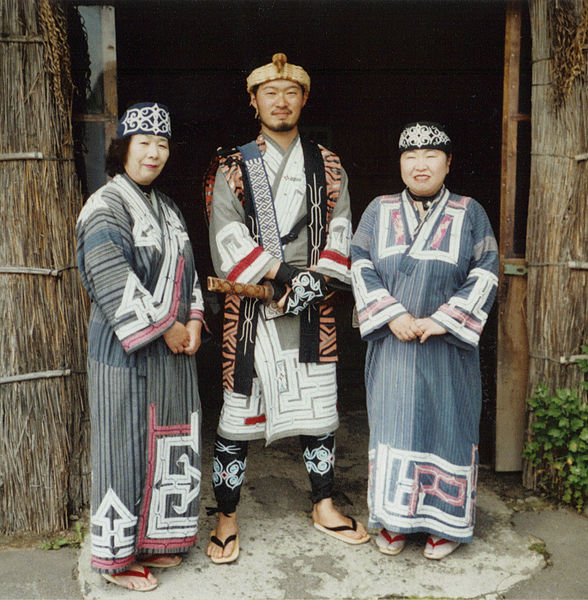
A group of people in traditional Ainu clothing.

An Ainu ceremonial tunic. Looks similar to the Oina's clothing, don't you think?
Kamui represents Hokkaido, the northernmost region of Japan and home of the Ainu people. Tau Wedel was kind enough to point out that Kamui is an Ainu word meaning "spirit." So many layers of meaning! Hokkaido is a harsh environment, much colder than the rest of Japan, with cool summers and cold, icy winters. Average winter temperature ranges from -12 to -4 degrees Celsius (10.4 to 24.8 degrees Fahrenheit). Hakkaido lies at 43 degrees north latitude, very near northeast Russia.
Additionally, The Sinnoh region of Pokémon Diamond, Pearl, and Platinum is based on Hokkaido.
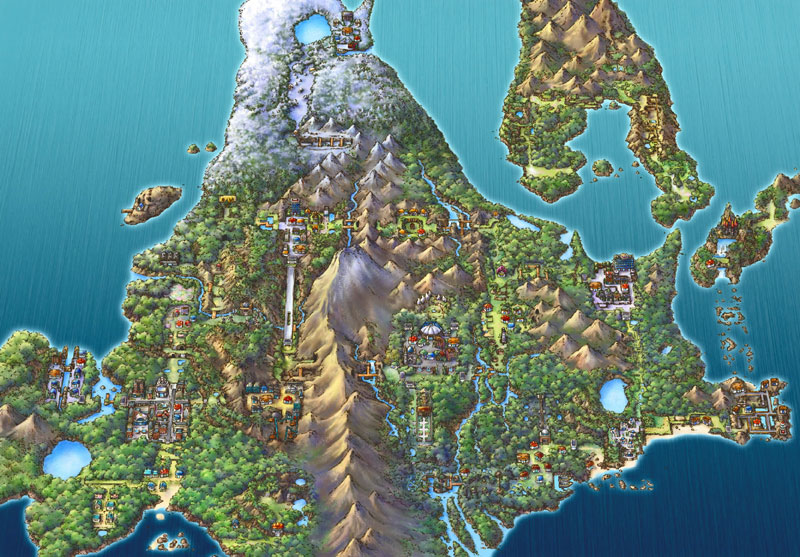
Sinnoh, home of many ice Pokémon
Many of the mythological references in Act 3 come from Ainu mythology.
Oina Masks
All the Oina wears masks, and have the ability to shapeshift into wolves. This somewhat relates to Ainu religious beliefs. The Ainu had a strong belief in animal spirits and would entreat the spirits of the animals to give themselves up to be hunted. After a successful hunt, the Ainu would hold a ceremony to return the spirits of the animal to the Earth, so that it may be reborn.
The Oina's masks are as follows:
Oki wears a wolf mask.
Kai’s is a caribou
Lika wears a leaf.
Kemu bears a tanooki mask, and he has a pot belly like a tanuki.
Tuskle’s aspect is an owl.
Samickle is a tufted eagle
Wali’s mask is... some manner of Cetacean, or a cow. I can't tell which.
The merchants also wear masks. The one outside in Kamui wears a seal mask, while the one in the village is a snake.
The other, unnamed villagers also wear masks. They’re just identified by what mask they wear: Otter Mask (Snowball Playground), Sea Lion Mask (near the Frozen Waterfall), and Squirrel Girl (Village entrance).
Yoshpet
Yoshpet means "consuming forest." It's based on a real-life location, oddly enough. On the northwest base of Mt. Fuji lies Aokigahara, the sea of trees. It's a dense forest, largely devoid of animal life, and known for being exceptionally quiet. The forest is believed to be inhabited by demons and restless spirits, an image not helped by its... popularity. No, I don't mean as a tourist attraction; it's a popular location to kill yourself. No, really, it's the second most popular place to commit suicide, after San Francisco's Golden Gate Bridge. An average of 100 bodies are found there every year, despite numerous signs, in both Japanese and English, urging visitors to reconsider their decision. Why? I don't fucking know! It's creepy.
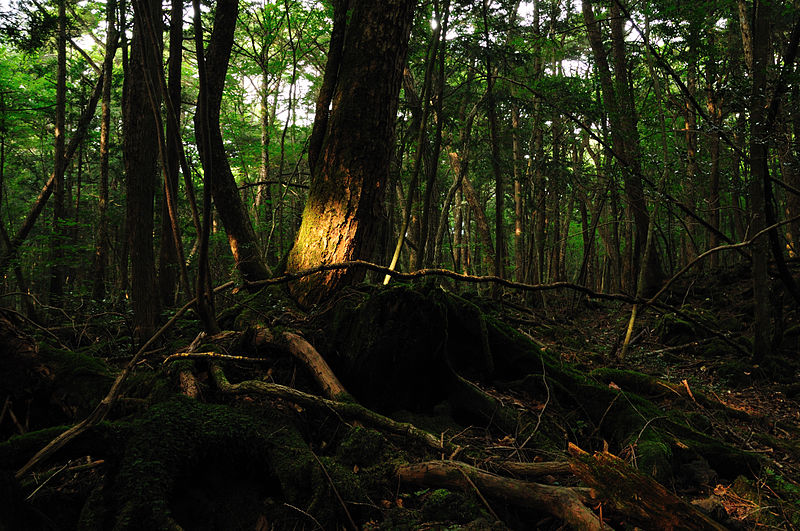
Creepy forest

Creepy forest, as seen from across a lake. Still creepy.
Lechku and Nechku
The Clockwork Owls Lechku and Nechku are based on a demon in Oina folklore called Moshirechikukotanechiku. This demon personifies the passing of time and the inevitability of death. It was split into twin owl demons, with clocks on their chests, for Okami. One of my sources describes a myth, in which Moshirechikukotanechiku traps Amaterasu by freezing her in stasis. She is rescued by an Ainu warrior (possibly the inspiration for Oki!). Another of my sources claims that Lechku and Nechku are also a parody of another pair of owls named Letchku and Netchku, but I couldn't find any further information about them.
The boss' monikers, Gold Demon and Silver Demon, might also be a reference to the classic Chinese novel "Journey to the West." In the tale, there are two demon brothers named Great King Kinkaku and Great King Ginkaku. "Kin" and "gin" are Japanese for gold and silver, respectively.
Lechku and Nechku also have a decidedly steampunk look. Steampunk, in a nutshell, is a sci-fi/fantasy genre that takes Victorian-era technology (which was heavily dependent on steam power and clockwork) and extrapolates it into modern times, or into the future. Steampunk features anachronistic technology, and futuristic technology that looks like it could have been invented by Victorians. New technology, old ideas, that kind of thing. That's all I'm saying about that.
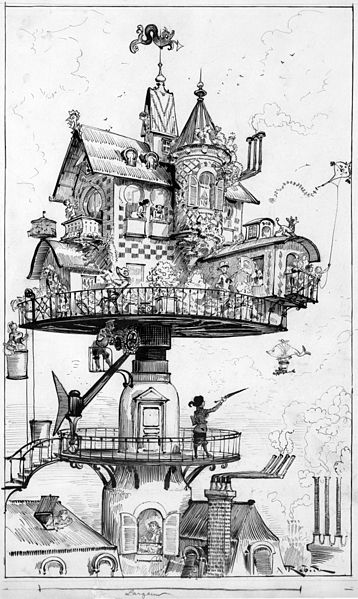
A 19th century drawing, imagining what life will be like in the 20th century. I'm not sure if I should be happy or sad at how off-base it is...

A station in the Paris Metro, with a decidedly steampunk aesthetic.
Oddly, the Clockwork Owls are the only boss that you don't have to re-fight in the Ark of Yamato.
Kutone
The sword Kutone originates from an Ainu epic poem called Kutune Shirka. The title refers to a magic sword wielded by the hero of the story, which he used to kill a magical golden otter. Perhaps Oki is based on the hero of this epic poem. He fights many battles with the aid of the magic sword.
Poncles
Poncles are based on creatures from Ainu mythology, called Koropokkur or Koro-pok-guru. They’re little people who live underground, similar to gnomes or wood sprites. As Tau Wedel said, Ponc’tan is derived from an Ainu compound word pon-kotan meaning "little village".
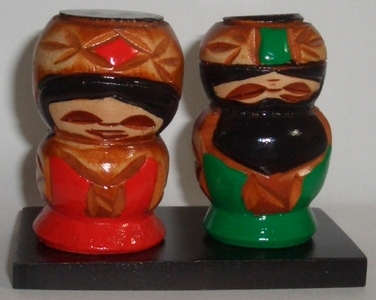
Wooden figurines of Koro-pok-guru
Ezofuji
Ezofuji would have to be based on Mount Fuji, the tallest mountain in Japan and one of Japan's three Holy Mountains. Fuji means “immortality.” It is so named from the elixir of immortality, which Kaguya gave to her most persistent suitor, Emperor Mikado, before she departed this world.
Mount Fuji is stands 3,776.24 meters, or 12,389 feet, above sea level, and is currently active. It last erupted in 1707. It is located on Honshu Island, about 100 km (62 mi) southwest of Tokyo, and is visible from the city on clear days.
The mountain is commercially important as a tourist attraction. Hundreds of thousands of people climb it each year. It’s also a holy site in Shinto, and has inspired artists and poets for millennia.
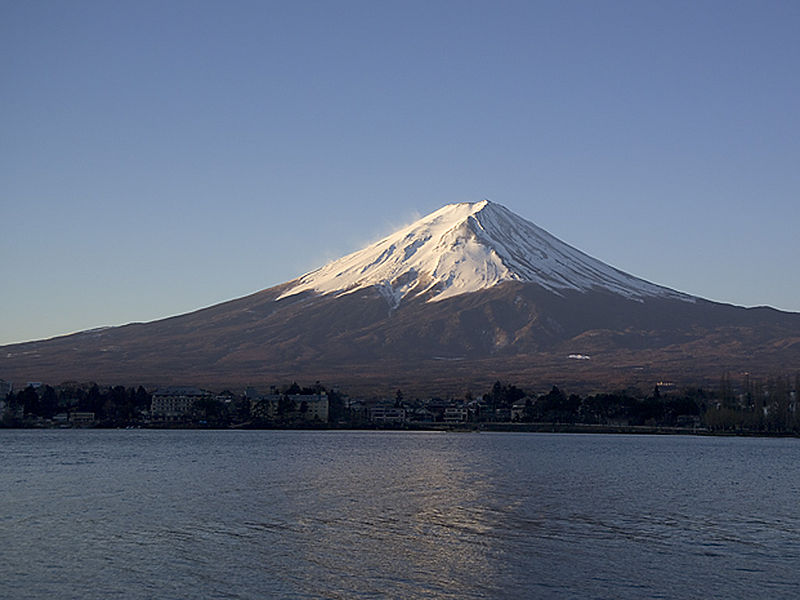
Mt. Fuji at sunrise
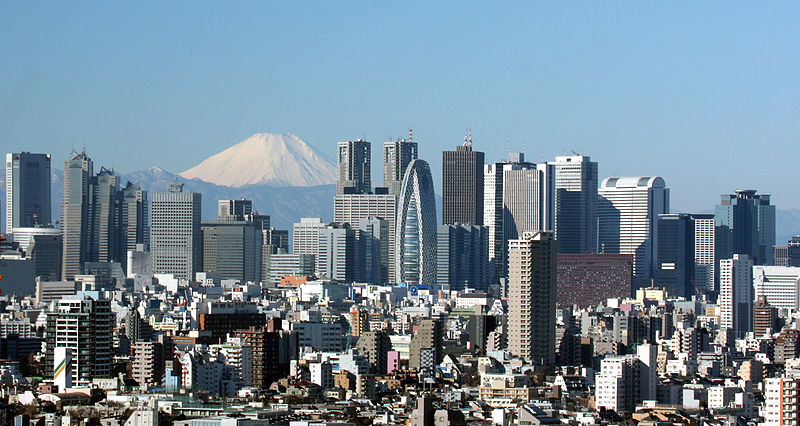
Mt. Fuji as seen from the skyline of Tokyo
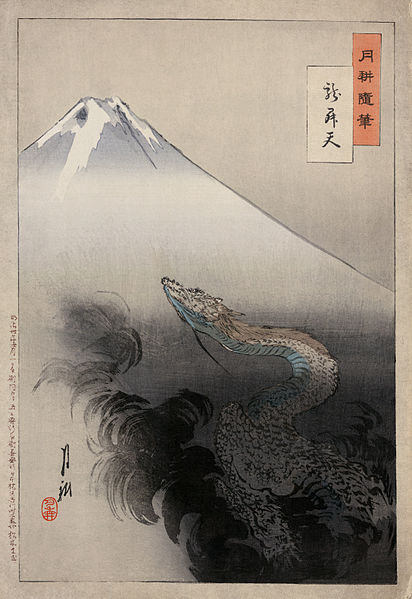
Part of a series of paintings entitled Views of Mount Fuji, by Ogata Gekko.
Arc of Yamato
Yamato was the ancient name of a province in Japan. Today, it is used to refer to Japan, and to the Japanese people and culture, as a whole. As Cichlidae mentioned in the Endgame 1 video, Yamato was also the name of a class of Japanese battleships from World War II. In particular, he was talking about the battleship Yamato, which was the lead ship of the Yamato-class. She, along with her sister ship, Mushashi, were the most heavily-armed battleships ever constructed; however, neither ship survived the war. The Yamato was sunk, en-route to her destination, by American carrier-based bombers in 1945.
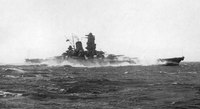
Battlship Yamato, at the height of her power
The rainbow bridge that leads to the Ark of Yamato in the game is likely based on Bifrost- old Norse for “shimmering bridge.” In Norse Mythology, Bifrost was the rainbow bridge that lead to Asgard, the realm of the gods. When the time of Ragnarok- “Fate of the Gods," basically the end of the world- comes, the gods will descend the rainbow bridge down to earth (Midgard), and fight their final battle.
As a silly aside, anyone who has played Civilization 2: Test of Time, those names should all sound very familiar to you! The fantasy scenario from that game drew heavily from Norse mythology.
Yami
Yami's name can be translated to "darkness, dark, gloom, or disorder". He's a fitting antagonist, being the Lord of Darkness. Darkness in this case is not metaphorical darkness, but literal: the opposite of light. Yami's power peaks during the solar eclipse, while Amaterasu's power is weakened. Yami may have some connection to the moon, but he doesn't seem to draw any power from it, since the moon also provides light from the sun's reflection. However, a solar eclipse is caused by the moon passing between the sun and the Earth. Ooh, symbolism!
Yami has a couple mythological counterparts. In Vedic Buddhism, Yami was the daughter of the sun god. She and her twin brother, Yama, were the first human beings. She was also known as Yamini, which means "night." Ah hah! So that's where the "Lord of Darkness" part comes in!
Yami is also the name of the Hindu goddess of death, who rules the female spirits in the Underworld, Naraka. Much more fitting.

The goddess Yami, holding court in Naraka
Celestials
The Celestials are the inhabitants of the Higher Celestial Plane, where the Shinto gods dwell and from which Susanoo was banished. It is ruled by Amaterasu. The Celestials resemble angels, and that's probably their closest analog in Judeo-Christian mythology.
Enemies
Time to talk about the significance of some of the Act 3 enemies.
Namahage
The Namahage enemies are based on an Ainu ritual in which people dressed up in costumes to scare lazy children. Heh, sort of like the Ainu version of Halloween? Cute.
Dogu and the Clay Soldiers
The Dogu enemy is based on Dogu statues, which I already covered in the 9th Mythology Dissection. The Clay enemies are likely based on funerary statues, which are figurines, usually made of clay, wood or stone, fashioned into the shape of soldiers and servants. They were buried along with important lords and generals in order to serve them in the afterlife. The tomb of Qin Shi Huang, the first Emperor of China, is an excellent example of this practice. He was buried with thousands of clay statues, called the Terracotta Army, around 3rd century BC. Qin’s tomb was discovered in 1974 by some local farmers.
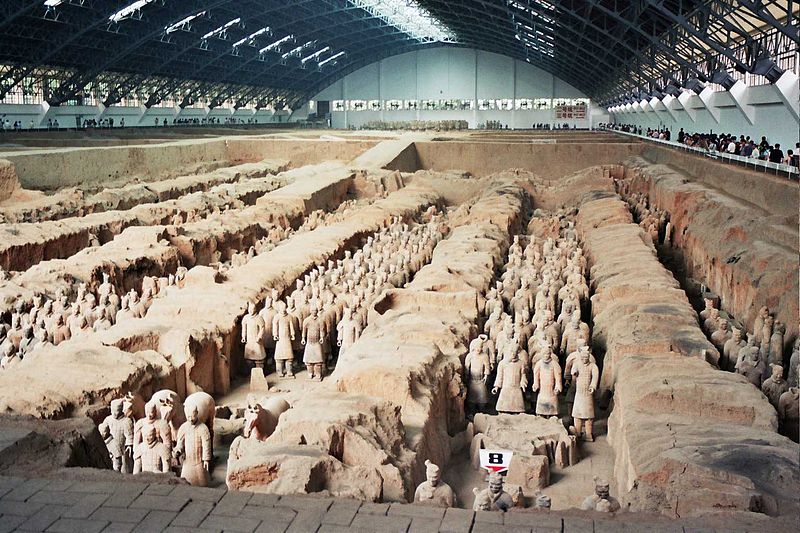
Emperor Qin's Terracotta Army
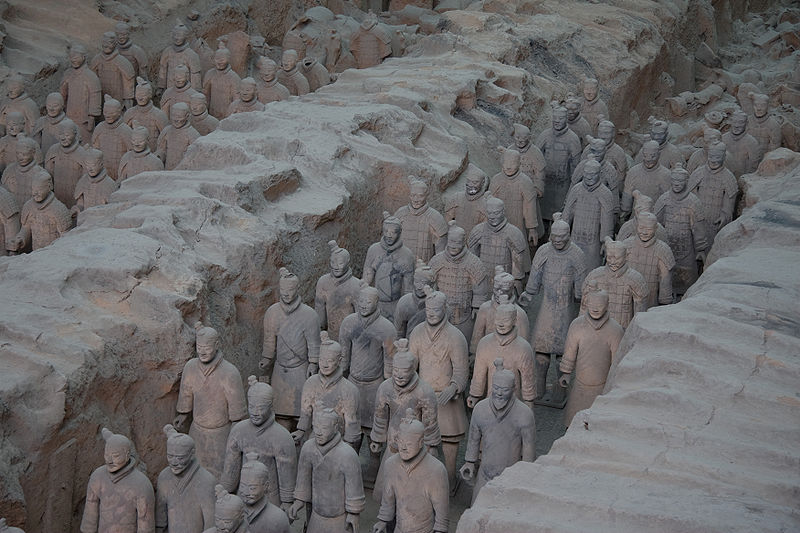
Another view of the largest chamber in Qin's tomb.
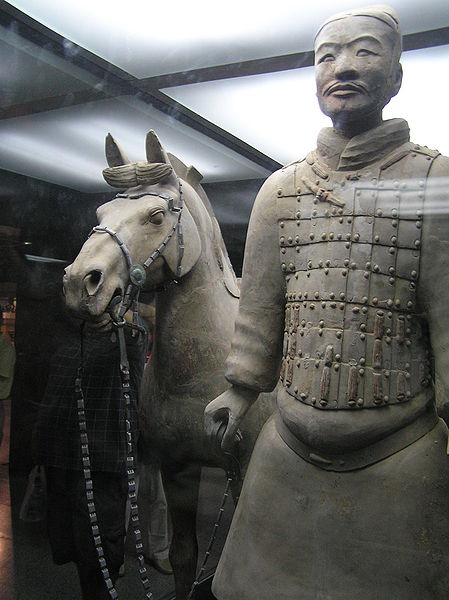
Close up of a soldier and his horse, life-size, of course
Great Tengu
The Great Tengu- and Crow Tengu, for that matter- is based on the tengu, a Japanese mythical creature. They are popular characters in folklore, art, literature, and theatre. Sometimes, tengu were even worshipped as Shinto kami (gods, as you should remember).
Tengu are humanoid beings with a mix of human and avian characteristics. Early tengu were depicted with beaks, but later that morphed into an unusually long nose, which is how tengu are most commonly represented today. The Crow Tengu and Great Tengu enemies exemplify both the early and later interpretations of tengu, respectively.
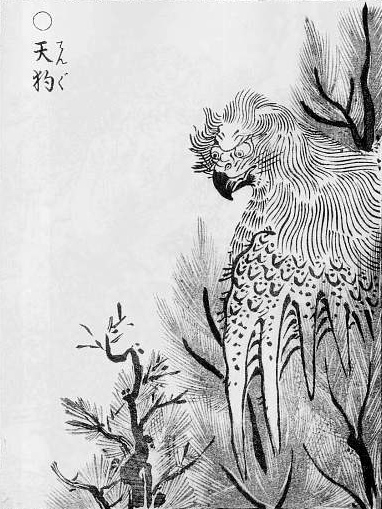
An early, bird-like tengu
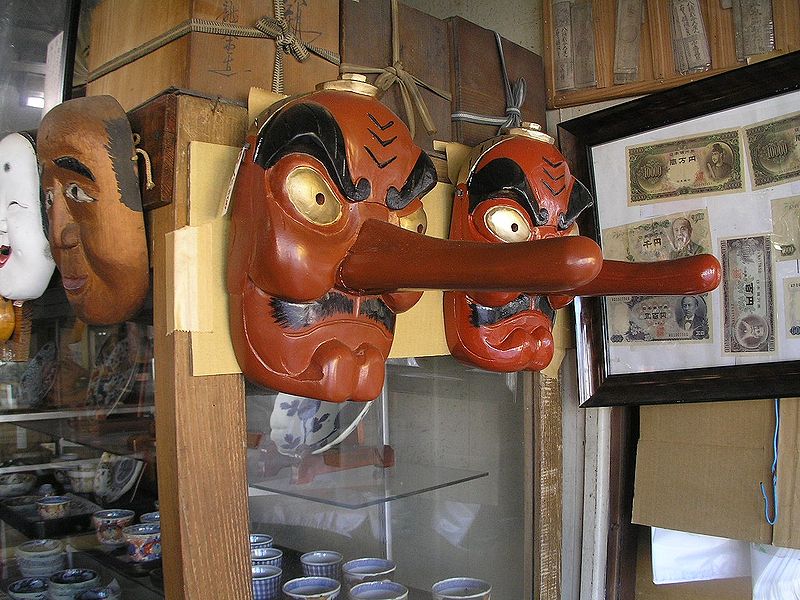
Tengu masks, showing the characteristic long nose
Waka also resembles an early tengu. His hat looks like a bird's head and wings, and he wears fantastical platform sandals, much like those worn by tengu.
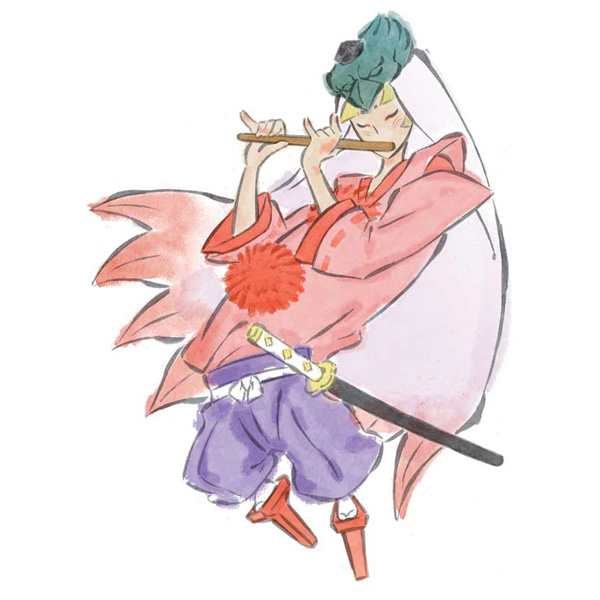
Stylish fellow, isn't he?
Tengu's depictions in folklore is rich and varied, much like the kitsune. Sometimes, they are evil tricksters and vengeful ghosts. Other times, they're represented as benevolent spirits of protection and good fortune. No matter their alignment, stories involving tengu are usually humorous. Easy to do, with their ridiculous appearance. Tengu are a bit like Western fairies, and are often equated as such. I don't think the comparison quite fits, but it's the closest thing I can think of.
One important legend involving a tengu is the tale of Minamoto no Yoshitsune, the famous warlord and Waka's mythological analog. When Yoshitsune was a young boy, his family was killed by the infamous Taira clan. Yoshitsune was spared, and sent to live in the mountains to train as a monk. While he lived at the monastery, he was known as Ushiwaka-maru (where Waka gets his name).
(This is a re-cap of the 6th Mythology Dissection, where I discussed Yoshitsune in detail. However, I mostly glossed over his early years.)
One day, while Ushiwaka was exploring the forest, he encountered the mountain's spiritual protector: the tengu Sojobo. The tengu offered to train young Ushiwaka in the art of swordsmanship, so that he might one day avenge his family. Ushiwaka agreed, and you all know the rest of the story.
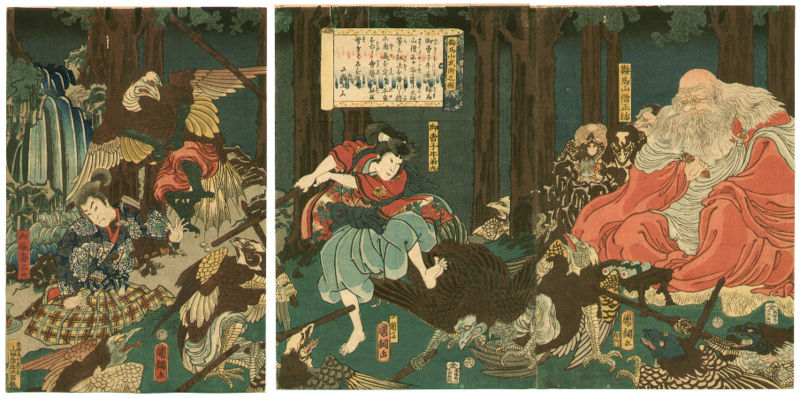
Ushiwaka and the tengu Sojobo
At first, Sojobo's actions were criticized. People thought he was working with demons to bring more chaos and war to the world. However, as Yoshitsune gained renown as a warrior, and overthrew the Taira, his teacher was regarded much more favorably.
And here’s our last Brush God:
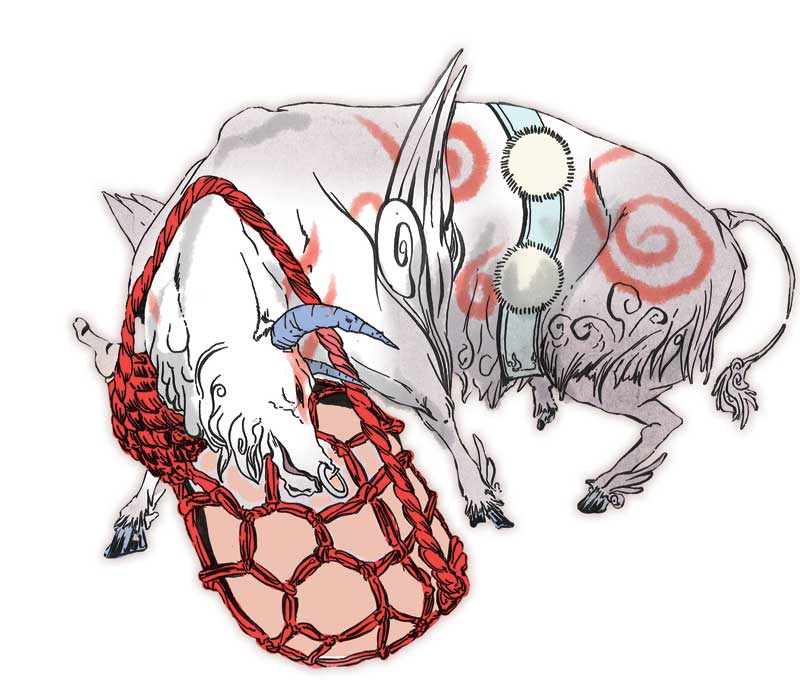
Itegami – the ox, god of ice. Ite is derived from "iteru" which means" to freeze."
Ox traits: Dependable, ambitious, calm, methodical, born leader, patient, hardworking, conventional, steady, modest, logical, resolute, and tenacious. Can be stubborn, dogmatic, hot-tempered, narrow-minded, materialistic, rigid, and demanding.
The ox kept a steady pace during the whole race and made it through all the obstacles without a problem, thanks to his immense strength. He would have placed first, had the rat not taken advantage of his good nature.
In the Vietnamese zodiac, the ox is replaced by a water buffalo.
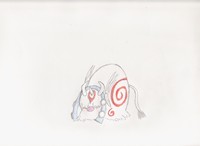
Piloegami
And that is all 13 Brush Gods! We’ve gone through the whole Chinese Zodiac (plus the cat from the Vietnamese Zodiac). Ammy should be an unstoppable force of nature by now, right?
That's it, folks! That's all the mythological stuff I was able to dredge up. I hope you've enjoyed reading my Mythology Dissections as much as I've enjoyed making them!